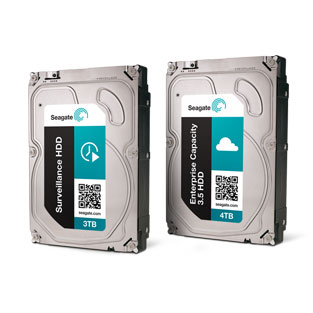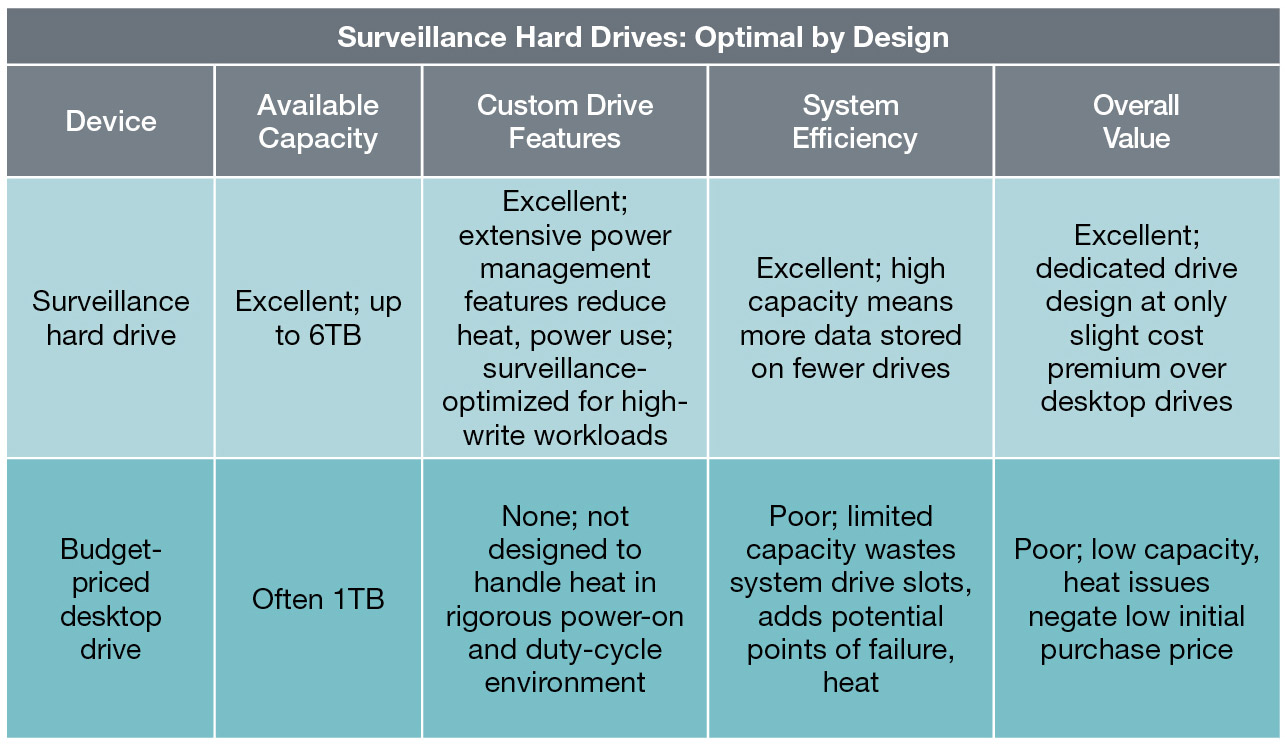
Introduction
The video security market has experienced phenomenal growth, due in large part to the powerful new capabilities delivered by digital video surveillance solutions. Enabling a new generation of sophisticated security software, these digital hard drive-based systems have provided a combination of performance, flexibility and power management that legacy analog tape-based systems simply cannot match.
With post-9/11 security concerns still playing a role in daily life, improved video surveillance has become an urgent priority for both the public and private sector. Whether in airports and federal government buildings, or in banks, office buildings and factories, video security systems are an essential tool in the battle to fight crime and keep people safe.
So it comes as no surprise that digital video surveillance systems utilizing hard drives are rapidly replacing tape-based systems. Bringing unprecedented power to vital security applications, these drive-based solutions enable a comprehensive range of benefits and capabilities:
- Higher image quality
- More active cameras and storage archiving
- Faster recording and access
- Improved data management capabilities
- Advanced, intelligent video recognition systems
Capacity, Custom Features Are Key
To take full advantage of digital video systems, it’s important to understand the fundamental issues that determine optimal hard disk drive deployment. Drive capacity is a key consideration, as higher-quality surveillance solutions can dramatically boost storage requirements. For example, adding more cameras can broaden security coverage but entails more data to be stored. Similarly, employing higher capture rates and frame resolution improves image quality, but at the expense of increased capacity needs.
Video archiving also plays an important role in determining how much drive capacity is needed. While short-term archiving can entail enormous quantities of data, extended archival periods only exacerbate capacity requirements.
By their very nature, always-on surveillance environments are taxing on drive durability. Factor in the potentially critical nature of the security data involved, and it’s clear that drives with application-specific features that can enhance reliability are preferable. The demands placed on video security drives are daunting: duty cycles as high as 95% writes, with drives typically powered on 24×7.
False Economies
In order to satisfy the substantial capacity requirements detailed above, some security professionals have chosen to utilize low-end, moderate-capacity desktop drives in their video security systems. Their goal is to minimize storage costs; unfortunately, such efforts have met with little success.
Deploying limited-capacity desktop drives imposes significant limitations and liabilities on video security systems, negating any theoretical cost savings. The limitations arise from the constrained capacity that such drives dictate; with a fixed number of drive slots, many video security systems simply can’t offer the sheer capacity needed to handle additional and/or higher-quality video streams. Nor can they accommodate longer retention of video archives.
The liabilities that result from deployment of inexpensive desktop drives are similarly troubling. With no application-specific features to address power management, desktop drives can suffer heat-related failures caused by the rigorous duty-cycle and power-on requirements of surveillance configurations.
Furthermore, a larger number of moderate-capacity drives are needed to meet a given capacity requirement, and that means more potential points of failure. This plethora of drives takes up more space than necessary, consumes more power and produces more heat—the latter a key factor in reduced drive longevity.
Purpose-Built Capacity
Simply put, video security solutions have unique requirements that demand hard drives specifically engineered to meet those needs. Such drives offer compelling advantages over desktop drives at only modestly higher prices, insignificant in the context of overall system cost.
The most obvious and immediate benefits of purpose-built surveillance hard drives derive from their exceptionally high capacities (up to 6TB). This can enable up to 84 days of continuous, high-quality video recording [1280×1040 frame resolution, 30fps, H.264 compressed video].
Alternatively, more video streams can easily be added for broader security coverage. With quadruple the capacity of many low-end desktop drives, a 6TB surveillance drive provides additional capacity should additional cameras need to be deployed, vastly increasing the range of a digital surveillance system. Should higher resolution video images be required, the generous capacity of purpose-built surveillance drives easily handles higher capture rates and frame resolution.
Archived surveillance videos can be an important tool in proactive efforts to predict and shut down potential security threats. High-capacity surveillance drives enable far longer archival storage periods than low-capacity desktop drives, making more video data accessible for rapid review and analysis.
Purpose-Built Functionality
The images captured by surveillance video are inherently ephemeral; if those fleeting moments are missed due to hard drive failure, they cannot be recreated and any information they contain is lost. Drives that include custom features to intelligently deal with heat management and power consumption should be part of any digital security solution.

Purpose-built surveillance drives are optimized for video security use, incorporating advanced power management capabilities. In those video security systems where massive amounts of information are stored, the large number of drives required can present power consumption challenges at system startup. Surveillance-optimized drives solve this by drawing less current at startup, which enables the use of smaller power supplies that produce less heat.
Surveillance drives take advantage of energy-conserving features during normal operation as well. Any drive in the system can be spun down into power-saving mode when not in active use. This significantly enhances system cooling efficiency and thus overall system reliability. (And the lower drive count enabled by high-capacity surveillance drives means fewer potential points of failure and less heat generated in the system).
Furthermore, the enhanced functionality of surveillance drives extends beyond energy efficiency and power management. They are also optimized for write performance in both seek- and write-caching firmware. This is key for video surveillance storage workloads, where writing data can represent up to 95% of the hard drive’s operation. Favorable performance and drive longevity are highly dependent upon this enhanced write functionality. Additionally, by supporting the ATA-7 command set, the read/write profile of surveillance drives can be tuned to video- or data-specific as appropriate.
Conclusion
As security becomes an increasingly urgent priority for businesses and governments alike, the need for digital video surveillance solutions has never been greater. While constrained budgets may tempt some security professionals to scrimp on storage by deploying bargain-priced desktop drives, the significant compromises this approach entails vastly outweigh any short-term cost savings.
With the advent of dedicated surveillance hard drives, video security systems can now deliver optimal storage capacity, performance and efficiency. Custom-designed for digital video security solutions, this new breed of hard drive is destined to play a key role in the evolution of surveillance applications.









